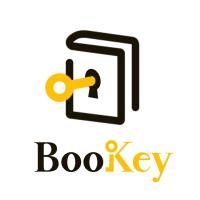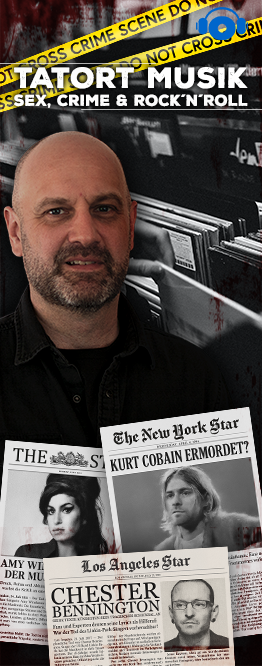Letzte Episode
The Anatomy of Story: Unlocking the Secrets of Narrative Mastery
21. März 2024
Nächste EpisodeChapter 1:Summary of The Anatomy of Story Full Book
"The Anatomy of Story" by John Truby is a comprehensive guide for aspiring writers on how to craft engaging and meaningful stories. Truby breaks down storytelling into its fundamental elements, providing practical advice and techniques to create well-structured narratives.
The book begins by introducing the concept of story structure and emphasizes the importance of a solid foundation. Truby argues that every story should have a strong premise, a clear desire line for the protagonist, and a well-defined opponent. He explains that the central conflict in a story is the engine that drives the plot forward and keeps the audience engaged.
Truby then delves into character development, emphasizing the need for multidimensional and psychologically rich protagonists. He provides tools and exercises to create complex characters with compelling motivations, strengths, and weaknesses. He also discusses the importance of supporting characters and how they can enhance the narrative.
Next, Truby demonstrates how to construct an engaging plot. He introduces the concept of a story's moral argument, which is the underlying theme or message conveyed through the narrative. He explores different plot techniques, such as the twist, the reversal, and the revelation, to create tension and surprise readers.
The book also touches upon the importance of setting, dialogue, and genre in storytelling. Truby explains how these elements contribute to the overall narrative and provide depth to the world in which the story takes place.
Throughout the book, Truby includes numerous examples from various mediums, including books, movies, and plays, to illustrate his points. He deconstructs well-known stories and analyzes their structures, providing valuable insights into what works and what doesn't.
Overall, "The Anatomy of Story" offers a comprehensive and practical guide to storytelling, providing aspiring writers with the tools and knowledge to create compelling narratives. It emphasizes the importance of structure, character, and theme while also celebrating the creativity and uniqueness of each individual story.
Chapter 2:the meaning of The Anatomy of Story Full Book
The Anatomy of Story Full Book by John Truby is a comprehensive guide to storytelling that breaks down the elements and structure of a successful narrative. It provides aspiring writers with a deep understanding of how to construct compelling stories and develop well-rounded characters.
The book covers various aspects of storytelling, including character development, story structure, theme, and plot. Truby focuses on the importance of building strong characters with complex motivations and desires, as well as the crucial role of conflict and obstacles in driving the narrative forward.
Truby also delves into the importance of theme and how it can add depth and meaning to a story. He offers techniques and exercises to help writers discover and integrate themes effectively into their work.
In addition to examining the building blocks of a story, Truby also explores different genres and gives insight into how each genre has its own unique rules and expectations. He offers examples from a wide range of films and novels to illustrate his points and provides guidance on how to apply the principles of storytelling to various mediums.
Overall, The Anatomy of Story Full Book is a comprehensive resource for writers seeking to improve their storytelling skills. It offers practical advice, exercises, and examples to help writers create engaging and impactful narratives.
Chapter 3:The Anatomy of Story Full Book chapters
"The Anatomy of Story: 22 Steps to Becoming a Master Storyteller" by John Truby is a comprehensive guide to creating compelling and well-structured narratives. While it is not possible to provide a full summary of each chapter, here is a brief overview of the key concepts covered in each section of the book:
- Premise: Identifying the core idea or theme of your story and using it as the foundation for the narrative.
- Story Structure: Understanding the importance of story structure, including the three act structure, and how to create a solid beginning, middle, and end for your story.
- Story Steps: Introducing the concept of the "Story Steps," which are a set of twenty-two building blocks that can be used to construct any story.
- Characters: Exploring the role of characters in storytelling and how to create well-rounded, dynamic characters that drive the narrative forward.
- Character Traces: Explaining the importance of character development and tracing the character's growth or transformation throughout the story.
- Weakness and Need: Understanding the protagonist's weaknesses and needs and how they drive the story's conflict and resolution.
- Desire: Identifying the protagonist's deepest desires and how they create the story's goals and motivations.
- Opponent: Developing a strong antagonist or opponent for the protagonist and understanding their role in creating tension and conflict.
- Planning: Outlining the planning process for your story, including creating a step outline and developing character arcs.
- Opponent's Plan: Understanding the opposing force's plan and how it interacts with the protagonist's plan, creating conflict and obstacles.
- Battle: Exploring the climax of the story and how to create a powerful, dramatic, and satisfying ending.
- Self-Revelation: Examining the role of self-revelation in storytelling and how it helps the protagonist achieve personal growth and transformation.
- New Equilibrium: Considering the aftermath of the story and how the protagonist has changed and reestablished a new equilibrium.
- Moral Argument: Understanding the moral and thematic arguments within the story and exploring how they contribute to the overall message.
- Symbolism and Theme: Exploring the use of symbolism and theme to enhance the depth and meaning of the story.
- Story Genres: Examining different genres and understanding the conventions and expectations associated with each.
- Archetypes: Exploring the use of archetypal characters and their roles in storytelling.
- Structure and Genre: Considering how story structure can be tailored to fit different genres.
- Developing a Classical Story: Demonstrating how to apply the principles of classical storytelling to create compelling narratives.
- Plot Scaffold: Describing a plot scaffold, which is a flexible framework for building a story that can be adapted to fit various genres.
- Story Arithmetic: Discussing the mathematical aspect of storytelling and how to balance various elements like conflict, pacing, and character development.
- Storytelling Errors: Highlighting common storytelling errors and pitfalls to avoid when crafting a narrative.
Each chapter delves into these concepts in detail, offering practical advice, examples, and exercises to help writers strengthen their storytelling abilities.
Chapter 4: 10 Quotes From The Anatomy of Story Full Book
- "A story is a series of actions that build to a climax."
- "A great story is life presented in a highly organized form."
- "The main function of the story premise is to present a problem that will be solved in the climax."
- "The moral of a story exists independently of the characters, just as the laws of a society exist independently of the people who live under them."
- "Conflict is the core of great storytelling."
- "Story structure is the arrangement and sequence of events in a story."
- "Great characters are created by rendering them as unique individuals, posing them in a network of relationships, and placing them in a world they both understand and are trying to change."
- "A well-executed subplot is an element of a story that adds depth and complexity to the main plot."
- "The climax of a story is the highest point of conflict and tension, in which the main character faces their greatest challenge and undergoes their most significant transformation."
- "The resolution of a story is the final stage, in which loose ends are tied up and the main character's journey reaches its conclusion."
- 00:00Kapitel 1
RSS Feed
Spotify
Wähle deinen Podcatcher oder kopiere den Link:
https://meinpodcast.de/bookey-book-summary-and-review/feed

